?I think it is natural to expect the caged bird to be angry at those who imprisoned her. But if she understands that she has been imprisoned and that the cage is not her rightful place, then she has every right to claim the freedom of the skies!” Kalpana Chakma
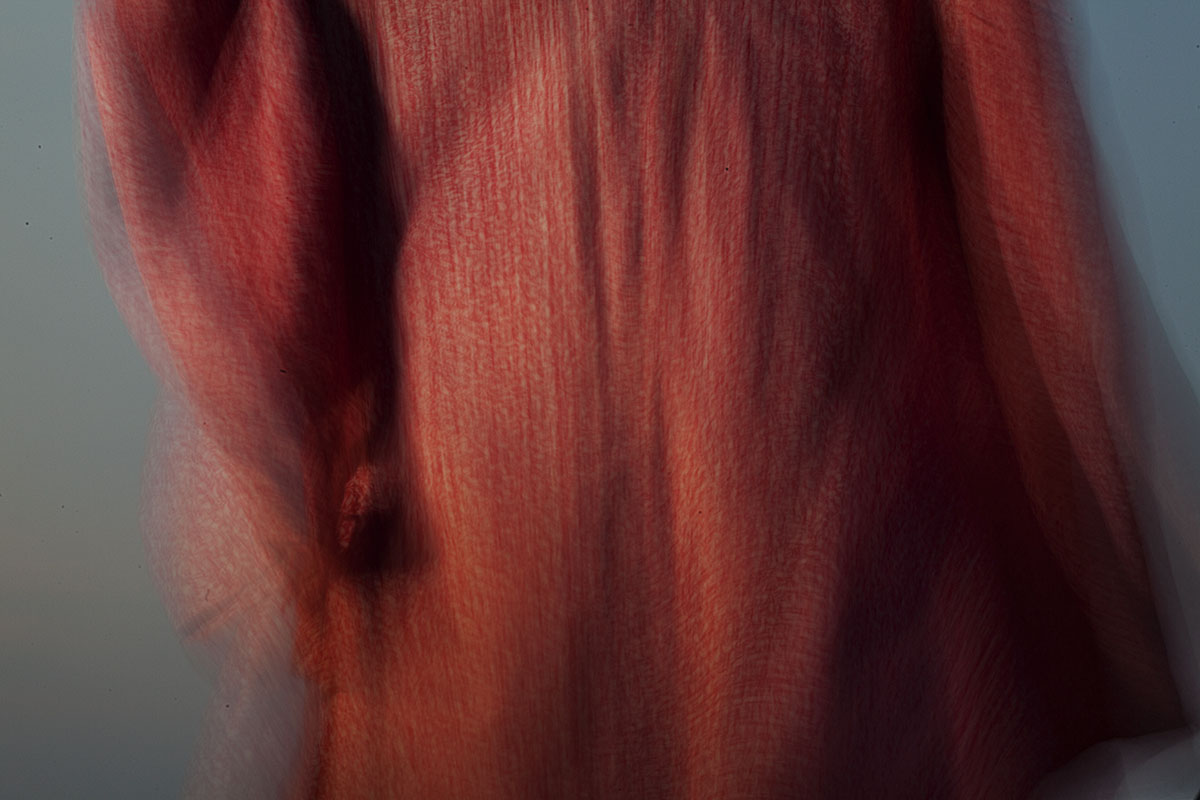
Eighteen. The legal age to vote.?The age of sexual consent. The threshold of adulthood when one ceases to be a child. Eighteen. The sections of the?Mahabharata. Eighteen armies fighting over eighteen days. Eighteen, the number of years we have waited for justice. Eighteen years that you have been gone Kalpana, my sister.
Continue reading “Eighteen”
Tag: state repression
Nothing happens if you beat up journalists
Police beat up photojournalists in Dhaka. Agargaon. 11:00 am 26th May 2012.
?When you had taught us in class that we should be fighters, we had never anticipated this.? Said Shahadat Parvez Anchal, senior photojournalist of the Bangla Daily Prothom Alo and former student of Pathshala. We were standing by the bed of his colleague Sajid Hossain, who lay with his leg in a plaster in cabin 416 at the Trauma Centre in Shyamoli. True. I had told them to be fighters in the cause of justice. To resist oppression, to uphold peoples? rights. That in doing so they would become targets of the police, was something we hadn?t considered. We should have done.
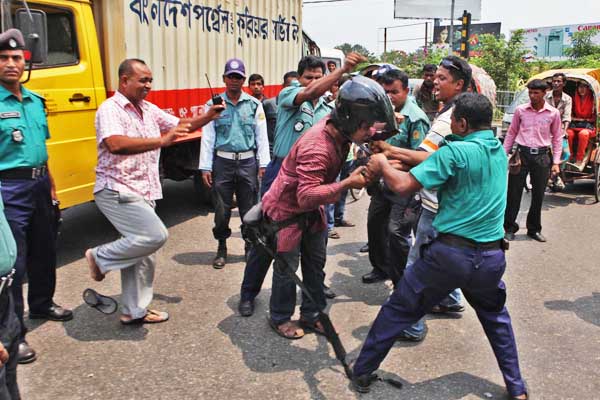
?Break the arms and legs of any journalist you see? had been the message of an Awami League minister in Satkhira way back in 2000. Even before he had made these inflammatory remarks in October, Awami League activists had brutally assaulted two journalists in the space of a week. Three other journalists had been murdered in the area. Not only had Sheikh Hasina failed to prosecute these violent attacks, she appeared to be actively encouraging the perpetrators. Continue reading “Nothing happens if you beat up journalists”
THE END OF AUTHORITARIANISM IN THE ARAB WORLD?
Subscribe to ShahidulNews
Mubarak’s Ignominious Departure and the Fear Factor
by rahnuma ahmed
Mubarak is gone! Egypt is free!
Equally true is the fact that power has been assumed by the Supreme Council of the Armed Forces. That the 30 year-old state of emergency has not yet been lifted, neither has any time frame been set, nothing beyond the invocation, “as soon as the current circumstances are over.” ?Equally true is the fact that Egypt’s new, transitional (military) rulers have been quick to affirm Egypt’s commitment to all regional and international obligations and treaties, an implicit signal that the treaty of all treaties, Egypt’s peace treaty with Israel?propagated as a bulwark for peace and stability in the region, but in reality, one which helps sustain Israel’s military occupation of the West Bank and the seige of Gaza?is not under threat. An affirmation swiftly welcomed by the Israeli prime minister Benjamin Netanyahu, who described the treaty as “having greatly contributed to both countries,” as “the cornerstone for peace and stability in the entire Middle East”; close at his heels was US president Barack Obama who welcomed the Egyptian pledge to “stand by” its international obligations.
But, it is also true that while Egyptian demonstrators, both young and old, rallied to scrub off slogans and graffiti from walls, to clean up the streets of Cairo of rocks, debris of violence, charred remains of Mubarak’s effigy (“Clearing the streets is just a start. It is our country now”), protestors still camped out in Tahrir square, refusing to leave until the military issued official statements on their next steps. It is also true that pro-democracy activists insist that their revolt was not against one man but against the whole regime, which Mubarak and his predecessors, had instituted. It is also true that their invincible strength prevented Omar Suleiman?the CIA’s man in Cairo who devised and implemented the programme for renditioning and torturing terrorist suspects,?in whom Mubarak transferred authorities while still clinging to power?from taking charge. Pro-democracy activists insist that the revolution will not be over until all responsible for the hundreds of deaths will be investigated, tried and punished. It will not be over until Egypt’s stolen funds are restored.
Swiss banks have frozen assets of the ousted president, who is currently hunkered down in his residence at the Red Sea tourist resort, Sharm al-Sheikh. Former interior minister Habib El Adly, former prime minister Ahmed Nazif have been banned from travelling, their assets have been frozen. Former information minister Anna El Feqy has been placed under house arrest while rumors fly of business tycoons fleeing. But it is also true that while figures are totted up of how much the former president, his Welsh wife and their son fleeced Egypt, that while the huge personal wealth amassed by other members of the corrupt coterie are calculated, one does not hear of corruption within the army. That these stories are silenced.
But it is undeniable that the mass uprising was organic. One that persisted after Mubarak’s ouster, attested to by scenes of youths in Alexandria, the mainstay of the uprising, stopping cars and telling their occupants, abide by traffic rules. Of telling pedestrians, do not give bribes, read up the constitution.
It is also true that the mass uprising did not occur overnight but was, as Marwan Bishara reminds us, “the culmination of countless sit-ins, strikes, pickets, and demonstrations.”
That behind the 18 day popular revolt lies long years of grassroots mobilisation, the tireless efforts of scores of coalition builders who worked with labour unions and opposition parties, both old and new, including the Muslim Brotherhood. That we must not forget people such as, says Bishara, the late Mohammad El-Sayed Said who helped to found the Cairo Institute of Human Rights Studies and, the Egyptian Organisation for Human Rights. Who underwent arrest and torture for writing the “much-acclaimed report about the punishment of dissidents by torture” (Al-Ahram). Who died last year after a long period of ill-treatment at the hands of the Mubarak regime, and a 2-year struggle with cancer. Who was “much missed in Tahrir Square.” There were many others.
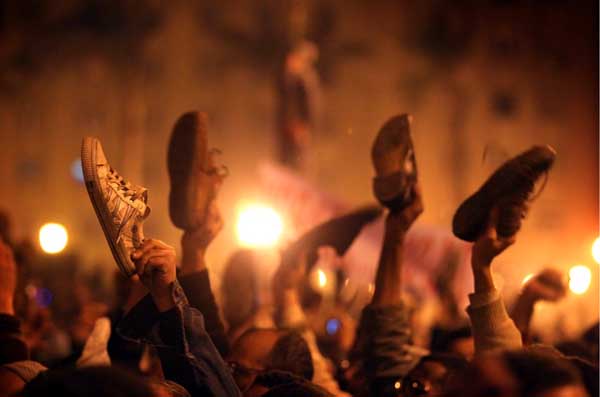
It is also true that Mubarak was suffering from severe delusions when he confided in a 20 minute telephone conversation to former Israeli defense minister Binyamin Ben-Eliezer, a close friend and ally, that he was looking for “an honorable way out” (Press TV, February 12, 2011). ?This was on Thursday, February 10, the day he refused to step down as anticipated, offering his “children” constitutional changes instead, and transfer of authorities to Suleiman. It was the speech greeted with raised shoes, the ultimate sign of dishonor for leaders and politicians in our parts of the world. One that was globally iconised by Muntazer al-Zaidi, the Iraqi journalist who threw his shoe at George Bush in 2008. A farewell parting.
Continue reading “THE END OF AUTHORITARIANISM IN THE ARAB WORLD?”
PART I THE END OF AUTHORITARIANISM IN THE ARAB WORLD?
Subscribe to ShahidulNews
`Go, Mubarak go!’ ?USA’s tottering user-friendly tyrants…
By Rahnuma Ahmed
Having grown up amidst popular uprisings, such as the Civil Disobedience movement in 1969, and much later, having participated in mass uprisings, foremost among them, the one against general HM Ershad’s regime in 1990, witnessing scenes of the unfolding peoples’ revolt against the US-bolstered 30-year old Mubarak dictatorship in Egypt, relayed live, courtesy of al-Jazeera television, is, well…, just great!
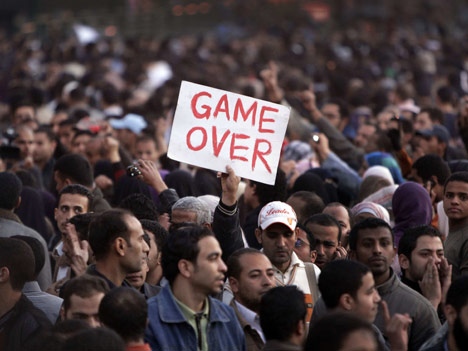
Every passing moment contributes to our history on earth, but some moments are crucial for they change history, writes Ashraf Ezzat, medical doctor and political analyst, from Alexandria. What the world now witnesses in Egypt, is not only the crumbling down of a dictatorship that stifled Egyptians for decades but “a whole age of authoritarianism in the Arab world.”
It all began in Tunisia. Mohammed Bouazizi, 26, a vegetable-seller, set himself on fire on December 17, 2010 after police confiscated his unlicensed produce stand; he died on Jan 3. Protests against unemployment, police brutality and the regime’s corruption increased, leading to the toppling of president Zine al-Abidine Ben Ali’s regime, a dictator who had ruled for 23 years, was re-elected president five times, each time winning 99.9%-89.62% votes, who amended the constitution in 2002 to allow the president (read, himself) to stay in power until the age of 75, to be re-elected unlimited times. After a 29 day popular uprising, Ben Ali, who headed “one of the Arab world’s most repressive regimes” (Guardian, January 15, 2011), ?who was a “stalwart US ally” (Foreign Policy, February 5, 2011)?was forced to flee, to take refuge in Saudi Arabia. Prime minister Mohamed Ghannouchi took over as interim president as soldiers guarded ministries, public buildings and the state TV building, as security forces were authorised to fire live rounds.
“Freedom is expensive and my brother paid the price of freedom,” said Salem, Bouazizi’s brother. “My brother has become a symbol of resistance in the Arab world.”
So true he was, as instances of self-immolation followed soon. An Egyptian man set himself alight near the parliament, a Mauritanian in front of the presidential palace in Nouakchott, the capital, while four unemployed young men reportedly immolated themselves in Algeria.
Continue reading “PART I THE END OF AUTHORITARIANISM IN THE ARAB WORLD?”
Shiv Viswanathan?s Letter to the PM
Subscribe to ShahidulNews
![]()
POSTED AT DECEMBER 30, 2010 // ARTICLES
The email id to send messages to Dr. Binayak Sen on his birthday on 4th January 2011 is drkkgupta61@yahoo.com. The fax number to send him his birthday messages is 92- 771- 2886313. The telephone number is 91- 771-2886027.
Citizens for Peace and Justice
This open letter by SHIV VISWANATHAN, Eminent Social Scientist, has been circulated by Communalism Combat:
Dear Professor Manmohan Singh,
I hope you don?t mind the temerity of this letter. It is written as one scholar to another, one citizen to another. I know you are a PM and people like me may not be influential. However some things must be said and said clearly.
I was aghast to find that Doctor Binayak Sen has been given a life term for sedition. Let me put it simply. I think it is an appalling act of injustice and a betrayal of an ethical vision.
The point I wish to make is simple. We do not have to agree with Binayak Sen, anymore than we have to agree with Mahaswta Devi or Arundhati Roy or Baba Amte. But these have been voices of conscience. These are people who have care and healed, given a voice to the voiceless. They represent the essential goodness of our society. They are Indians and outstanding Indians and no nation state can negate that. I admit that such people are not easy people. They irritate, they agonize over things we take for granted or ignore. They take the ethical to the very core of our lives. Let us be clear. It is not Sen?s ideology that threatens us. It is his ethics, his sense of goodness. We have arrested him because we have arrested that very sense of justice in ourselves.
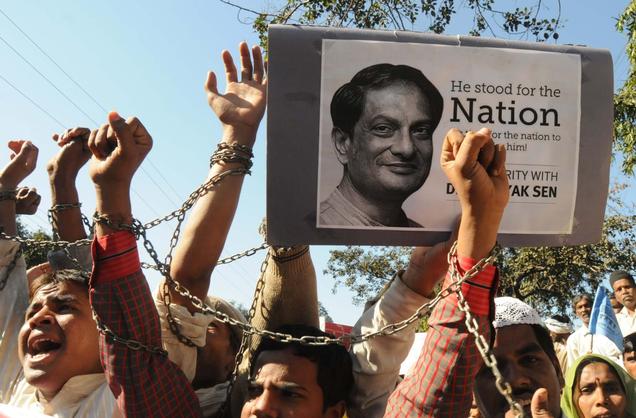
Sen is a man with courage, a professional doctor with the conviction that healing has to go beyond medicine, that the body cannot heal when the body politics is ill. He is a reminder that health, politics and ethics go together. Another man who said it but a bit differently was Mohan Das Gandhi.
Sen is a reminder of the deeper travails of our society. We hate the poor for their poverty. Worse, we hate those who fight for the poor. Somehow it has become fashion to condemn human rights, to treat activists as fifth columnist, to regard them as fronts for terrorists groups.
A human rights activist has the courage to point out the humus of terror is injustice. Oddly and predictably people who fight injustice are condemned as terrorists. A human rights activist often has to defend a man he disagrees with, keeping both the activist and the disagreement alive.
The sadness of our state is that its categories have become numb and lifeless. Categories like the nation state, the idea of security, our sense of territoriality lack a recognition of generosity, the courage, the challenge to categories that dissenters make. Yet the risk the dissenter takes is preferable to the silence that exonerates violence torture, injustice or genocide. Mr.Binayak Sen should be in your cabinet Mr.Singh, or a member of your development councils, not in jail. A life giving career cannot be met with a life sentence. Think of your own angst and silent suffering after 1984. You are an honest man, a sensitive man and a gentle man. Think of the slow indifference to justice then.
The word Naxal or Maoist sins less than it is sinned against. It is a term that black-boxes a variety of reactions to violence and injustice. Some of them seek to meet violence with violence, some seek to engage with the roots of violence. Others sympathise quietly with victims of injustice. When was empathy a crime? It is a strange world where to call a man a naxal sympathizer condemns him as much as the Naxal activist. The word Naxals is also applied to tribals who fight for justice or the activists who fight along with the tribals. To condemn all is to condemn a large part of India. If fighting for justice or caring for an old man is sedition, then the seditious need a param vir chakra, as warriors against injustice, not a life sentence. To punish Sen is not just bad law, it is an act of cowardice. It is odd that it is Sen who believes in the law at the very moment the law condemns him. Both radicalism and the rule of law are human creations and both demand critical scrutiny. It is time for a conversation. A society where those who fight for decency are attacked cannot be a decent society. You are a decent man and a thinker. All I ask is that you think about the case of Binayak Sen. Invite him for tea listen to him. It will not tarnish you or the rule of law. It might show you the yawning gap between law and justice.
Think of it, Mr.Prime Minister that ours is a society that spends more on defending the Raja, Radia and Kalmadi than Binayak Sen. The law works for the first three who corrupt the core of our system but fails for Binayak Sen who upholds some of its finest values. Tell me Mr.Singh how long can a society remain sane without confronting such ironies?
Let me frame it in a different way. Today?s sedition might be tomorrow?s axiomatics. We often define as sedition what we can?t understand or can?t stand. It challenges our sense of security, the security of categories. It might be easier to understand Sen?s work within a framework, a spectrum of thought.
Begin with the Arjun Sengupta report on the informal Economy. It shows how we have sinned against the life world of hawkers, traders, scavengers, trades which constitute 70% of our economy. Then think of Jairam Ramesh claiming forests are not as renewable as we think and that tribes and forests have a connectivity that we must understand. That shakes up the na?ve theory of growth. Then think of Mahasweta showing how tribes have been converted to bonded labour, how mining has corroded our country. Then place Binayak Sen in that spectrum as a doctor and a human rights activist. It is the Chattisgarh bureaucracy that sounds tyrannical and unreasonable. One realizes sedition has become a stick to beat down dissent or to even erase concern for the downtrodden.
To impose a life sentence on Sen is to freeze our own lives of possibility. It is time not just to release Binayak Sen but to honour him and the ideals he worked for. Our democracy for all its bumbling can still rise to the occasion
Shiv Viswanathan
Related links:
Flawed evidence and charges: The Hindu
The evil within: The Statesman
The case of the good doctor: Himal
GOD’S OWN (article by Joshy Joseph)
Statement on the Binayak Sen Judgement
Subscribe to ShahidulNews
Posted by Radical Notes
December 31, 2010 at 8:44 am in India
Sanhati
We are deeply anguished by the convictions and sentences of Dr. Binayak Sen, Piyush Guha, and Narayan Sanyal by the additional district and sessions judge of Raipur for sedition. We also note that in a separate case, Asit Sengupta was convicted and sentenced to eight years imprisonment for his work as magazine editor and publisher. Sanhati strongly condemns their convictions and sentences.
Convicting Dr. Sen of sedition and treason against the country, when he has devoted his life to service for the poorest citizens of India, yet again illustrates the disdain of the state towards its citizens and democracy. The real crime of Dr. Sen in the eyes of the government has been his protest against the state-sponsored vigilante force of Salwa Judum, and his efforts to bring to light the atrocities committed by this vigilante army on the indigeneous population of Chattisgarh. The state has attempted to make an example of Dr. Sen to all dissenting against its policies or protesting repression. Nevertheless, the state will fail in its attempt to create a fear psychosis among political and social activists; its efforts will only lead to the strengthening of resistance against state repression.
The charge made out by the prosecution against Dr. Sen was that he was responsible for passing letters from Narayan Sanyal lodged to Piyush Guha. Examination of witnesses and evidence presented by the defence demonstrated that the meetings in prison between Dr. Sen and Narayan Sanyal, the jailed Maoist leader, followed all legal norms and were based on the capacity of Dr. Sen as a physician and a human rights activist. When the accusations against Dr. Sen could not be supported by evidence in court, the government brought up other trumped-up charges and falsified evidence, much of which was glaring in its absurdity. That the court chose to overlook all this, has exposed the nature of our judicial system to the entire world.
It is necessary at this juncture to also mention that numerous undertrial political and social activists are today incarcerated in various prisons in India or languishing in jail for prolonged periods without trial, charged under various draconian state or central laws. These laws, and various draconian provisions of the criminal penal code, are being used to clamp down upon resistance movements against various anti-people policies pursued by the Indian state. The charges against Dr. Binayak Sen, and the travesty of justice in the name of his trial, have brought this hard truth to the fore.
We strongly condemn the convictions and sentences against Binayak Sen, Piyush Guha, Narayan Sanyal, and Asit Sengupta. We demand that the injustice meted out to them in the name of dispensing justice be rectified immediately. We also demand that the state immediately stops the systematic usage of various draconian laws and charges of sedition against activists to silence all voices of dissent.
Imprisoned, or dead. Reflections on Victory Day, 2010
Subscribe to ShahidulNews
By Rahnuma Ahmed
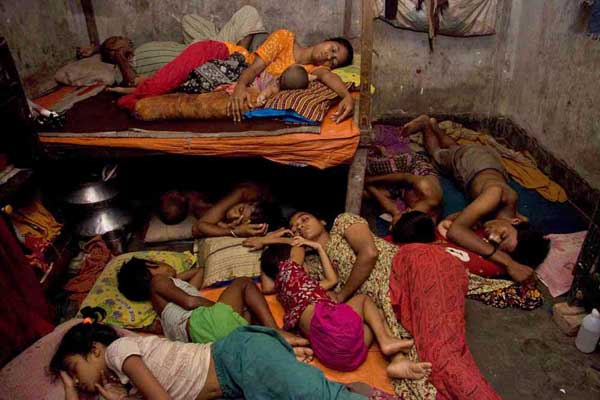
My heart was heavy on Victory Day.
On Dec 12, four people, including a rickshaw driver aged 35, were killed in Chittagong EPZ as garment workers clashed with police because the new wage structure when implemented, meant getting lesser wages. According to news reports, the management of South Korean-owned Youngone suddenly shut down all its units after workers protested the withdrawal of their Tk 250 lunch allowance. When 10,000 workers turned up for work on Sunday morning, they found the factory closed down for an indefinite period. Demonstrations and picketing took a violent turn when police opened fire with live bullets (600 rounds) and tear gas shells (150 canisters). Workers retaliated with brickbats, sticks and stones. The Deputy Commissioner (Port) in Chittagong claimed, rickshaw-driver Ariful Islam had died from a hurled brick; his employer however said, he had been shot dead. Eight injured persons had bullet wounds. Police filed cases against an unidentified 33,000.
Less than two days later, in the early hours of December 14, a contingent of 12 or so claiming to belong to the Detective Branch, all in plainclothes except 1, turned up at the Kola Bagan house of Moshrefa Mishu, president of Garments Workers Unity Forum. When her sister Jebunnessa wanted to see a warrant, they threatened to arrest her too. Mishu was only allowed to change her clothes, she had to leave her medicine behind: for asthma, and for a severe spinal injury from an attack on her life several years ago. She was produced in court after midday and remanded for 2 days on charges of inciting vandalism during worker unrest in Kuril (Kafrul, Dhaka) in June this year. At the end of 2 days, she was remanded for yet another day. She had Jamaat links, they alleged. It needed further investigation, they said.
Mishu? Remanded? For inciting vandalism? As we sat stunned with this news on the 14th, the gods played a cruel joke.
On December 14, a fire broke out in Ha-Meem Group’s sportswear factory in Ashulia, Dhaka. Fire spread to the dining area on the 10th floor where about 150 workers were having lunch. “Emergency exits were closed,” said Abdul Kader to Asia Times Online. To escape from the rapidly-spreading flames, 50-60 workers jumped off the tenth floor. Many, to their death.
Ha-Meem management says 23 died; hospital and clinic sources report 26 deaths, some newspapers report 31 but workers insist many more as relatives throng at the factory gates in search of missing family members. After being closed for two days to mourn the deaths of workers, it was re-opened on Friday, the weekly holiday, but also, a public holiday due to Ashura. The next day, a large chunk of concrete fell on the floor of the 8th floor, as the devastation caused by the fire was being repaired. Workers rushed out of the building fearing for their lives. At least 25 were injured.
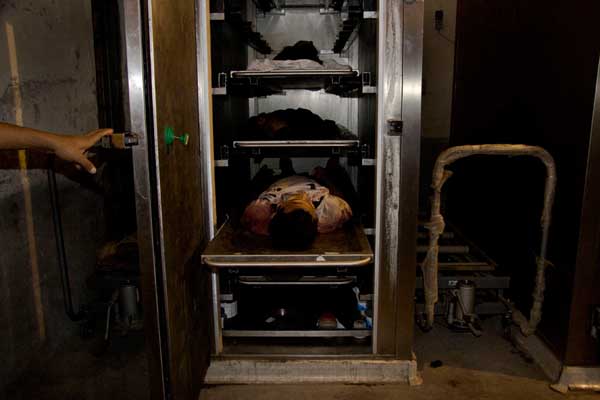
According to the Fire Service and Civil Defence Department, fires broke out in 213 factories between 2006 and 2009. The number of deaths? 414. These figures include the Spectrum/Shahriyar Sweater factory collapse in 2005, when 64 workers were killed and 80 were injured, 54 seriously. It excludes the deaths caused by fire which broke out this February at Garib & Garib Sweater factory, built on marshy land. 21 workers’ died, another 50 were injured.
According to international groups dedicated to improving the working conditions of workers worldwide, the Bangladeshi garment industry is “notorious” for its bad safety record. Most of the deaths and injuries are entirely “preventable.” According to the Clean Clothes Campaign, a global network of labour and women’s rights organisations, Bangladeshi factory owners “blatantly violate building code and health and safety regulations”; the government (regardless of which party is in power) “fails to enforce these regulations.” At Garib & Garib, fire rapidly spread because the floors were filled with inflammable materials such as wool threads, workers who were cut off by the fire could not escape because emergency exits were locked; material piled-high blocked the stairways. Fire brigade officials said, the factory’s fire-fighting equipment was “virtually useless.”
The joke played by the gods was undoubtedly cruel since it snatched away many lives? 23? 26? 31? more??but it pointed fingers as well.
Has any factory owner ever been picked up by the police, remanded, arrested, and charged because of factory fires? Not that I know of. The officer-in-charge of Ashulia thana says, (only) a general diary has been lodged in connection with the fire at Ha-Meem. Interestingly, Ha-Meem Group’s managing director AK Azad is also the president of the Federation of Bangladesh Chambers of Commerce and Industry (FBCCI).
Just as factory fires are not properly investigated, neither are acts of vandalism. One hears ministers, high party officials, intellectuals-serving-party-interests and experts claim every so often that these are caused by `outsiders.’ But these `outside forces’ are never specified. Despite turf wars over waste cloth from the garment industry (jhoot baybsha). Despite cutthroat competition among some of the owners themselves. Despite rumours that some were initiated to claim insurance. Despite competition between exporting nations, too. It is much easier to demonise Mishu, other garment leaders, and workers in general. After all, who knows what Pandora’s box a genuine investigation will open?
Nearly three and half million work in the RMG sector, mostly women. It accounts for 80% of annual export earnings and makes clothes for major Western brands such as Wal-mart, Marks & Spencer, Carrefour, Tesco, JC Penny. In 2006, the monthly minimum wage was fixed at Tk 1,662 (US$23). Since then, despite spiralling prices and soaring living costs, garment workers had received no pay rises, although Bangladeshi labour law dictates that wages should be reassessed and adjusted every three years. The new minimum wage approved in August this year?at 3,000 taka ($43) it fell far short of labour union demands of 5,000 taka ($72)?was grudgingly agreed upon by owners, unwilling to give Eid bonuses according to the new wage structure. Last year, the president of Bangladesh Garment Manufacturers and Exporters Association (BGMEA) had demanded a 30 billion taka subsidy ($428 million) from the government’s stimulus package fund to pay workers wages and bonuses. It was outrageous even by AL government’s standards which, as Shahidullah Chowdhury, president, Bangladesh Trade Union Centre, points out, is “essentially biased” towards protecting and promoting the interests of the rich. The finance minister rejected it outright, leaving the BGMEA mumbling that it was an “error.”
Clashes occurred in November this year because many factories had either failed to implement what had been agreed upon, or had implemented it through applying a grading system which effectively “lessened” the pay of many workers.
As I write, I remember Mishu telling me many years ago, I seem to be spending my life fighting for basic rights, those that are declared in the ILO Convention, are laid down in Bangladesh law. Struggling for more fundamental changes, for the re-distribution of wealth and resources, is a far cry. These basic rights should be enforced by the government, she said. In its own interest.
Was muktijuddho not fought for ensuring economic and social justice? For changing the lives of the greater majority for the better? The Awami League and its intelligentsia would have us believe that it was fought only against religious forces who had collaborated with the Pakistan government and its army, a sore enough point for the nation given post-1971 events. Given that the war criminals of 1971 were politically restored, given that Jamaat-e-Islami became BNP’s electoral allies, became a part of the government. But the trial of war criminals is a national issue, it should not be subjugated to serve the narrow interests of the Awami League. Nor should we allow it to be capitalised upon by imperial forces, to draw us into the ever-expanding `war on terror.’

The adoption and pursuit of neo-liberal policies have led to the emergence of new forms of femininities in Bangladesh. Women pose, strut down the aisle. The closed-off, vacant look they are trained to wear makes it difficult to tell whether they know that the garments they parade are soaked in sweat. In tears. And, in blood. Of other women.
__________________________________________
Published in New Age, Monday December 20, 2010
URGENT. Release Garment Workers Leader Moshrefa Mishu immediately, arrested on fabricated charges
Subscribe to ShahidulNews
![]()
Please circulate this message as widely as possible, and do everything you can think of. Rahnuma Ahmed.
Officers of the Detective Branch of police picked up labour leader Moshrefa Mishu, president of Garments Workers Unity Forum, from her home in Dhaka a little after midnight.
According to news reports, her sister Jebunnesa Jebu who lives with Mishu, said she was was taken away to the Detective Branch Headquarters for interrogation around 12:45am,?14 December 2010.
About a dozen police officers, in plain clothes except one, carried out the raid on the labour leader’s Bhuter Gali home in Kalabagan.?The officers did not show any arrest warrant, said Jebunnesa, nor did they explain why she was being led away.?After having initially denied her arrest, she has now been charged by the police with having instigated garment workers to go `berserk’ at Kuril.
The arrest occurred three days after thousands of Bangladeshi garment workers picketed factories in Dhaka demanding the implementation of a new minimum wage that should have come into effect last month. Demonstrations and picketing spread to the Chittagong EPZ, three people were killed and 225 injured in police clashes in Chittagong on Sunday. Police have arrested 33?people and?lodged three separate cases against about 30,000 unknown people for Sunday’s deadly violence in the port city.
More than three million people, most of them women, work in Bangladesh’s garment factories, which make clothes for major Western brands, this includes Wal-Mart, Marks & Spencer and Carrefour.
State repression (killing, baton charges, firing tear gas, filing cases) upon workers who are fighting for implementation of wages officially agreed upon, makes a mockery of the democratic principles?that Sheikh Hasina-led Awami League?government claims to uphold. It is a matter of urgent concern that the police should release Moshrefa Mishu immmediately. The government should also release all garment workers who have been arrested, lift the cases against large numbers of people which is aimed at intimidating workers who are fighting for their rights, and should force factory owners to pay wages agreed upon earlier.
Related links:
Window to the soul
Exhibition by Taslima Akhter on Garment workers (lower down on the page)
Update:
BREAKING NEWS: Moshrefa Mishu was produced before the Chief Metropolitan Magistrate (CMM) Court after midday today. The court granted 2 days remand.
We would like to remind everyone that she was arrested unlawfully, i.e., without any warrant; from what we have learnt since from her sister Jebunnessa Jebu, despite repeatedly being asked the reason for their presence, or whether they had a warrant, members of the force responded by threatening to arrest Moshrefa Mishu if she persisted in asking to see a warrant.
She was only allowed to change her nightclothes and to put on a sari but was not allowed to take her medication for asthma and severe spinal pains, caused by an attempt on her life several years ago.
Moshrefa Mishu has been receiving threatening calls over telephone warning her to stop fighting for the rights of workers in the garments sector.
Drik: Photo power
By Satish Sharma
The shutting-down of two photographic exhibitions in Dhaka?s Drik Gallery in just the last few months proves that Bangladesh?s censors, unlike lightning, can strike at the same place more than once ? especially where Drik?s photographic practices are concerned. But then, Drik seems to have become a lightning rod inviting censure, and this will not be the last time either. Not if I know Shahidul Alam and his commitment to pushing photography in what he calls ?the majority world?. If actually being knifed has not stopped him, nothing will.
The British Council in Dhaka had once tried to shut down a Drik exhibition by Roshini Kampadoo because it ?hurt the image of Britain?. And in November last year it was the turn of the Chinese embassy in Dhaka that wanted an exhibition on Tibet, also in Drik, to be closed. When a personal visit by the Chinese Cultural Counsellor and his cultural attach? bearing gifts (calendar, a silk tie and tea) didn?t work, they invoked worsening diplomatic relations and brought to bear the weight of the Bangladeshi government, Special Branch police and even parliamentarians. But Alam didn?t buckle, instead inaugurating the exhibition in the street after the gallery was locked up by the police. He shut it down the next day, however, as a protest against the interference.
Alam?s new exhibition and installation, ?Crossfire?, should have been safer from threats of closure. It was not photojournalistic documentary or even an Americanised ?documentary style?. It showed no dead or disappeared people. Much more conceptual, it allegorically invoked the disappeared through subtler and quieter means. But because it dealt with ?crossfire? deaths by specially raised Rapid Action Battalions (in India, one would call these ?encounter deaths?), it drew fire ? and closure, and protests against the closure.
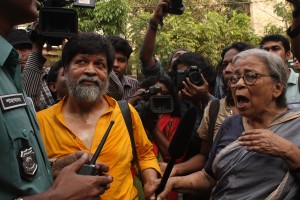
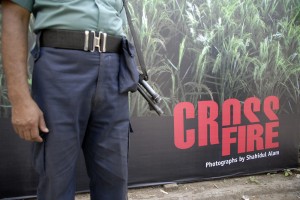
There is something about photography that invites censorship. The power of the photographic image simply has to be controlled, it seems ? one way or another. If ideas of aesthetics, beauty and spiritual values don?t work, governments pass and use anti-terror laws. And internationally applicable anti-terror laws, with the attendant globalised cultural control, are now beginning to have a universal presence, reach and influence.
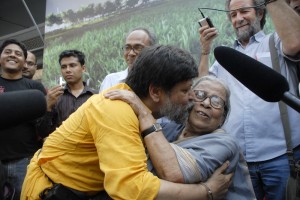
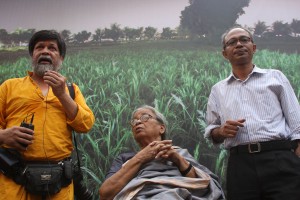
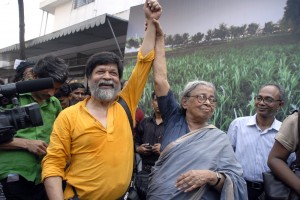
Any critical photography is subtly suppressed by evoking ideas of photography as a ?fine art?, and by inducing self-censorship before it is more pointedly and politically policed through action by the state?s security services. Self-censorship, I believe, was at the heart of the lack of any decent coverage, by Indian photographers, of the Emergency and the 1984 anti-Sikh riots.
The desire to control the photographic message is, however, universal. And that desire is as old as the medium itself. From colonial control of the photography during the 19th century to anti-terror laws in the era of the global ?war on terror? to control the photographic images of the 21st century, little seems to have changed. The power of photography to control and manipulate perception of the world?s raw realities is too important to be left unchallenged. It is noteworthy that these do not even have to be powers from one?s own country. Perception management is a global political strategy with a global reach; it is globally practiced.
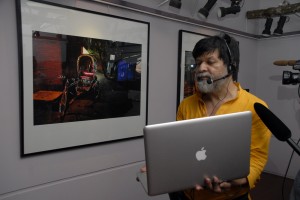
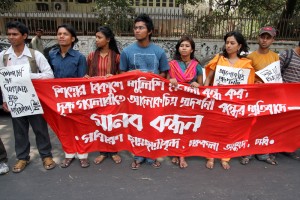
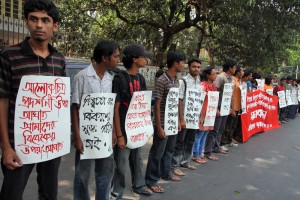
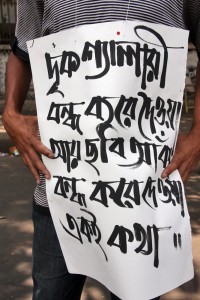
In February, Uzbekistan convicted a photographer for ?slandering the Nation?. Umida Akhmeddova had been documenting the daily struggles of ordinary people, and was accused of ?portraying the people as backward and poor?. Her ?photo album [did] not conform to aesthetic demands? and ?would damage Uzbekistan?s spiritual values?, said the expert panel appointed to look at her work.
The Abu Ghraib photos were not shot by professional photojournalists, yet special laws were passed by the US Congress to prevent their dissemination. Most of the pictures and video footage still remain out of reach ? legally secured, not only by the special acts of the US Congress, but also through the raising of issues such as the right to privacy of the ?victims? and their oppressors, and by wives of the soldier-photographers who raised issues of personal copyright to prevent these photographs from being seen more widely.
Anti-terrorism laws are also being used to prevent photography in Britain?s streets. Photographing the most well-known monuments has become suspect, with even professional press photographers being harassed by local police. Street photography, we have to remember, has a long and proud tradition, and the streets have a central space in the practice of urban photography. Even photography as a safely sanitised art form, a documentary style, is not a safe practice. But then, safety is not what should drive photography. It needs to recover and secure its critical spaces ? its critical power.
Satish Sharma is a photographer, critic and occasional curator. He was a former tutor at Pathshala and currently lives in Kathmandu.
The article was published in Himal Southasian
Related links:
Sri Lanka Guardian
Earlier post on Crossfire
